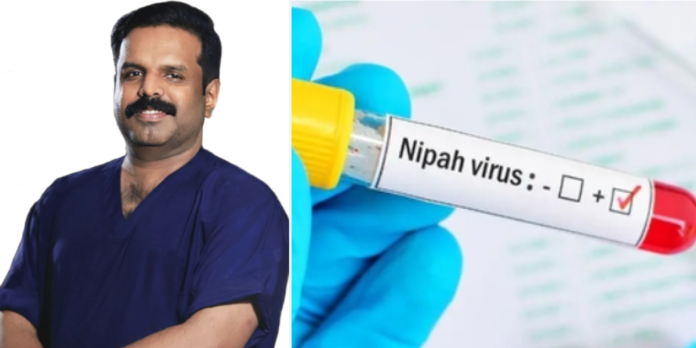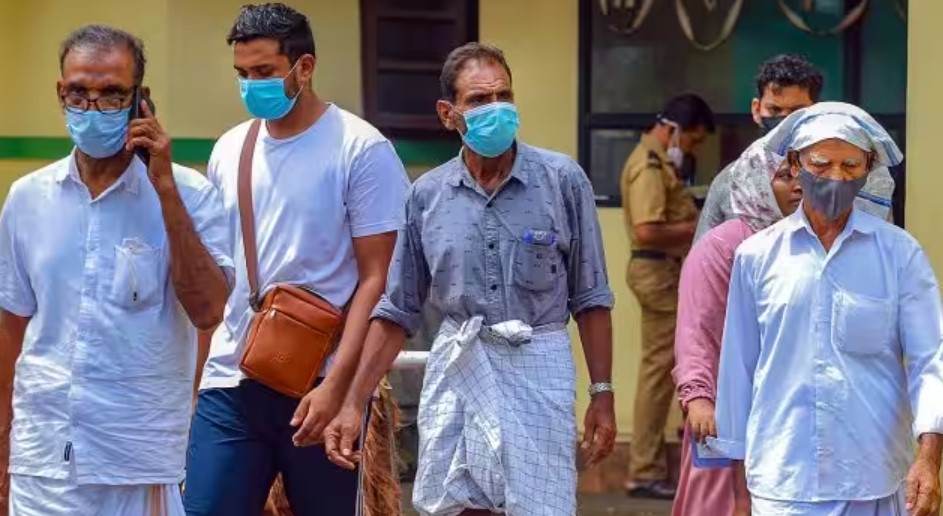
Introducing the Kerala Doctor Who Detected the Nipah Outbreak, Both in 2018 and This Time.
Date:

Share post:
On September 10, 2023, four individuals were admitted to Aster MIMS Hospital in Kozhikode, Kerala, exhibiting fever, cough, and respiratory symptoms. Among them were three children and one adult, all of whom were closely related. Further investigation revealed a recent family death, with the father of two of the children passing away 10 days earlier at a nearby hospital. Intriguingly, all these patients hailed from Maruthonkara, close to the epicenter of the 2018 Nipah virus outbreak in Kerala, raising concerns among the medical team.
A Familiar Threat Returns
The re-emergence of a virus with a history of devastation prompted a swift response from the medical professionals attending to the patients. Dr. Anoop Kumar AS, the director of North Kerala (Cluster) of Critical Care Medicine at Aster Hospitals, played a pivotal role. Dr. Kumar had previously earned recognition for identifying the first Nipah outbreak in 2018. His experience from that time proved invaluable in tackling the current situation.
“This clustering of cases with respiratory symptoms, coupled with a probable index (primary) case and the fact that they hail from the area near the previous epicenter, gave us a suspicion that it was a rare virus and that it could be Nipah,” Dr. Kumar stated.

A Race Against the Clock
The medical team acted swiftly, isolating the four patients and sending their samples to the National Institute of Virology (NIV) in Pune. They also notified state health authorities. However, the sudden death of a 42-year-old patient with similar symptoms at a different hospital on September 11 raised additional concerns.
Dr. Kumar and his team delved deeper into the circumstances surrounding the deaths, particularly focusing on the father of the two children. While initial reports attributed his demise to bronchopneumonia and multi-organ failure, reanalysis revealed unusual symptoms such as slurred speech and double vision. Simultaneously, his nine-year-old son, admitted with severe breathing difficulties, began experiencing convulsions and required ventilator support.
The situation escalated further when another patient, unrelated to the family but admitted to a different hospital, exhibited severe pneumonia symptoms, including fever and cough. Within three days, this young adult succumbed to cardiac arrest in the emergency room, leaving doctors puzzled.
Connecting the Dots
In their quest for answers, Dr. Kumar and his team unearthed crucial connections between these cases. The deceased 42-year-old patient had a significant overlap with the first patient, having been treated in the same hospital’s ICU. Both cases raised red flags, prompting the medical professionals to follow Nipah protocols for handling the deceased’s body and promptly sending samples to NIV.
Subsequent tests confirmed Nipah virus infection in the 42-year-old patient and two others among the four originally admitted. Additionally, three more individuals in Kozhikode tested positive for Nipah, bringing the total number of cases to six.
Also Read: India’s Art and Craft Extravaganza, India’s Artistic Showcase at G20

Containing the Outbreak
Dr. Kumar’s team played a pivotal role in helping the state government establish containment zones, tracing all contacts of the affected individuals, and implementing isolation measures. Their experience from the 2018 outbreak proved invaluable in orchestrating a rapid response to the Nipah resurgence.
Nipah Virus: An Elusive Foe
Nipah, a zoonotic virus, poses unique challenges as it can spread from infected animals like bats or pigs to humans. Unlike previous outbreaks, the 2023 cases presented with flu-like symptoms, making diagnosis more challenging.
Symptoms such as fever, cough, respiratory distress, slurred speech, confusion, convulsions, and low platelet counts are indicative of Nipah infection. Timely diagnosis and isolation are critical in preventing the virus’s spread.
Kerala’s Vigilant Healthcare System
The recurrence of Nipah in Kerala raised questions about the region’s susceptibility. Dr. Kumar attributes Kerala’s repeated encounters with the virus to its robust healthcare surveillance system, quick diagnostic capabilities, and efficient containment strategies. Collaboration between private clinicians and government health departments has played a crucial role in curtailing the disease’s transmission and safeguarding public health.
Also Read: On the Road to Wellness, Dr. Swaminathan’s Mobile Clinic Initiative
